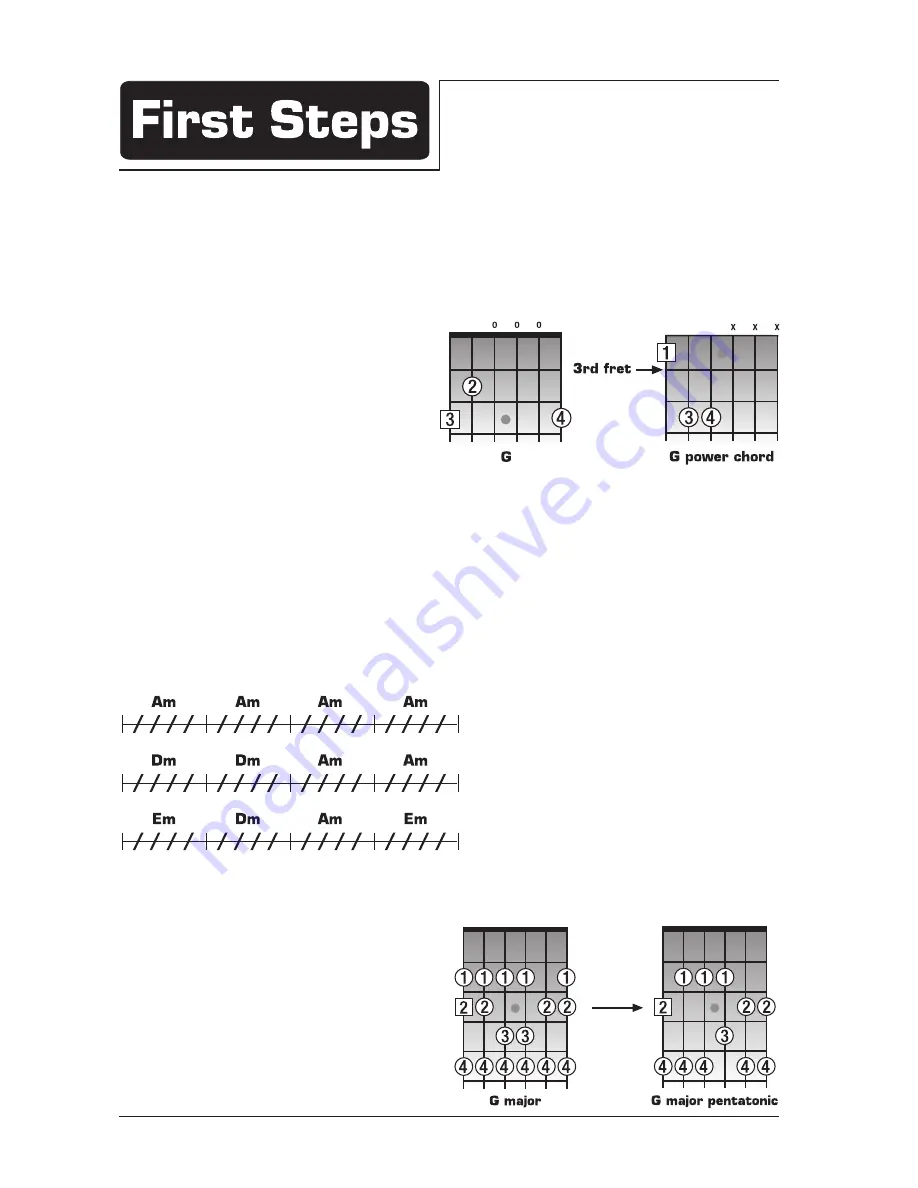
8
POWER CHORDS
Power cords are those chords that utilize only the bottom three
strings of the guitar. This creates a more closed sound and
mutes the top strings. Its called power chord because this
technique creates a more imposing overall sound. Power chords
are an integral part of rock and metal music.
See the following example:
F MAJOR
The F chord (F major) on page 7 is a base barre
chord, and it may take some time to get it right.
So, whats a barre chord? Barre chords are
basically chords moved up the fretboard by using
your barred finger as the nut.
Dont avoid practicing; doing it just a little each
day, youll be positively surprised by the results.
Once youve mastered basic chords, youll have
a powerful tool for controlling how you play your
guitar.
Did you notice the similar shape of the E and F
chords? Right, the F chord is simply an E chord,
shifted upward one position.
This trick works equally well for a lot more chords,
e.g. Am. Shift to the 5th fret position and play
Dm! Here, too, the index finger replaces the
nut.
EASY CHORD PROGRESSIONS
This diagram shows an easy chord progression in the key of A minor. The tune has a total length of 12 measures, divided
in three parts of four measures each. Start again from the beginning when youve played it all the way through.
Each slash means a downstroke. Study each chord as a single unit before you start playing the whole progression. Strive for
a slow but steady beat. When you feel comfortable, experiment with different tempos.
You can easily mute the top three strings with your index finger
while playing the power chord.
Note: If you move the G power chord 2 frets upward (in the
direction to the pickups), you get an A power chord, 4 frets
upward and you get a B power chord... you get the picture. ;-)
PENTATONIC SCALE
Penta means five in Greek, and tonic refers
to tone. Therefore, the pentatonic scale consists
of five tones per octave. In other words, it is a
major scale without the 4th and the 7th note.
Still with us? Keep in mind that, in contrast to
the pentatonic scale, the major scale consists
of 7 tones per octave.
The diagram shows you how a pentatonic scale
is derived from a G major scale. For example,
use the notes which belong to the G major
pentatonic scale to play an easy guitar solo.
Here are some more chord progressions to play:
1) A - D - E - A
2) A - D - E7 - A
3) A7 - D7 - E7 - A7
4) D - G - A7 - D
5) G - C - D - G
6) D - Em - G - A - D
7) C - Am - Dm - G - C
8) G - Em - Am - D - E
Summary of Contents for Vintager
Page 1: ......




















